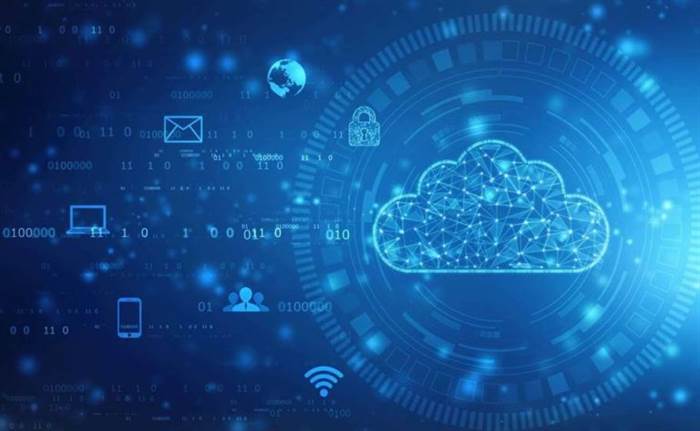Both pace and safety at fog nodes are different potential points that demand attention. The fog computing paradigm can section bandwidth traffic, enabling users to boost safety with extra firewalls within the network. Data storage is another essential distinction between cloud computing and fog computing.
Fog computing brings the benefits and power of the cloud nearer to the place information is produced and used. Since each entail moving processing and intelligence nearer to where the information is produced, the words fog computing and edge computing are sometimes used interchangeably. Although fog computing could presumably be carried out for safety and regulatory issues, that is regularly carried out to extend https://www.globalcloudteam.com/ efficiency. Fog computing is a form of distributed computing that brings computation and data storage nearer to the network edge, where many IoT devices are located. By doing this, fog computing reduces the reliance on the cloud for these resource-intensive tasks, enhancing performance and reducing latency (TechTarget, 2022). Decentralization and adaptability are the main distinction between fog computing and cloud computing.
In fog computing much less knowledge demands instant cloud storage, so users can as a substitute subject knowledge to strategic compilation and distribution guidelines designed to spice up efficiency and scale back costs. Fog computing enables you to deploy purposes closer to finish users, which reduces community congestion and improves efficiency for these applications. If real-time response and a centralized view are essential, fog computing might be the better fit. For easier tasks and limited power/connectivity conditions, edge computing might be sufficient. Ginny Nichols, a product line manager for Cisco, first used the phrase “fog computing” in 2014.
Fog computing consists of edge processing as properly as the mandatory infrastructure and community connections for transporting the info. By transferring storage and computing techniques as close to as possible to the applications, elements, and devices that want them, processing latency is removed or significantly decreased. This is very important for Internet of Things-connected devices, which generate massive amounts of knowledge. Those units experience far much less latency in fog computing, since they’re closer to the info supply. The objective of edge computing is to deliver the info sources and devices closer collectively, eliminating the time and distance to process. In concept, this in flip improves performance and pace of applications and devices.
The phrases fog computing and edge computing are sometimes used interchangeably, but they’re completely different. When administration will get less complicated, businesses frequently select a centralized strategy for his or her technological infrastructure. The installation of a dispersed collection of heterogeneous fog units introduces additional compatibility and maintenance points.

Those nodes closest to the edge, or edge nodes, take in the information from other edge gadgets such as routers or modems, and then direct whatever knowledge they take in to the optimum location for evaluation. Thus, the choice of processing knowledge close to the sting decreases latency and brings up diverse use instances the place fog computing can be used to manage sources. Here, a real-time power consumption utility deployed throughout a number of devices can monitor the person vitality consumption rate of every device.
Examples Of Fog Computing
Because an autonomous vehicle is designed to operate without the need for cloud connectivity, it is tempting to assume of autonomous vehicles as not being linked units. Even although an autonomous vehicle should be able to drive safely in the whole absence of cloud connectivity, it’s nonetheless potential to use connectivity when obtainable. Some cities are contemplating how an autonomous automobile may function with the same computing resources used to regulate visitors lights. Such a vehicle might, for example, perform as an edge gadget and use its personal computing capabilities to relay real-time information to the system that ingests traffic information from other sources. The underlying computing platform can then use this knowledge to operate traffic indicators more successfully. Any gadget having processing storage and community connectivity can be a fog node in fog computing and placed on a railroad track or a gas station.

The cloud provides the extended computing sources needed for storing the huge amount of data that edge devices produce however don’t use. It additionally provides more computing assets for further evaluation, which makes the cloud a complementary ecosystem for fog computing functions. The primary difference between fog and edge computing is that fog computing extends cloud companies and connectivity to gadgets at the fringe of the network. In distinction, edge computing brings computation and knowledge storage closer to units at the edge of the community. Fog computing implementation includes either writing or porting IoT applications on the community edge for fog nodes using fog computing software program, a package fog computing program, or other instruments.
Fog Computing Vs Edge Computing
The result is extra physical distance between the processing and the sensors, yet no extra latency. Autonomous vehicles basically operate as edge units due to their huge onboard computing energy. These automobiles must be able to ingest data from an enormous variety of sensors, carry out real-time data analytics and then reply accordingly.

By distinction, in the conventional centralized mannequin of cloud computing, data and applications are stored in a central location and accessed over the network. This is as a end result of each fog and cell edge computing goal to cut back latency and improve efficiencies, but they course of information in barely totally different areas. Edge computing usually occurs directly the place sensors are connected on devices, gathering data—there is a bodily connection between data supply and processing location. Another means to consider the difference between edge computing and fog computing is that fog is the standard that enables repeatable, structured, scalable performance throughout the edge computing framework. Edge computing is largely a subtype of fog computing that signifies that information is generated, processed, and saved shut collectively.
What Are The Advantages And Disadvantages Of Fog Computing?
Processing knowledge on the stage of the automobile using a fog computing technique via an onboard car processing unit is an important part of sharing the constrained cell bandwidth. It is greatest to analyze the info in the distant place where it was created, subsequently fog computing is perfect for this. In other cases, the information is not from a single sensor however rather from a collection of sensors, such because the electrical energy meters in a neighborhood. In these instances, it is preferable to process and aggregate the information regionally somewhat than to transmit the raw information in its entirety to avoid overburdening the info transmission.
- This was because fog is known as clouds which are near the bottom in the identical means fog computing was associated to the nodes that are current close to the nodes somewhere in between the host and the cloud.
- Fog computing can be used to help a extensive range of purposes that require information to be processed at the edge of the community.
- In wrapping up our exploration of the differences between Edge Computing and Fog Computing, it’s evident that both ideas are revolutionizing how we course of and make the most of data.
- Other giant data sets that aren’t well timed for the required task are pushed to the cloud.
- The power of the IoT comes from its capability to gather and analyze large volumes of data from numerous sources.
Fog computing is a decentralized computing infrastructure in which information, compute, storage and applications are situated someplace between the data source and the cloud. Like edge computing, fog computing brings the advantages and energy of the cloud nearer to the place information is created and acted upon. Many individuals use the terms fog computing and edge computing interchangeably because both contain bringing intelligence and processing closer to where the information is created.
Under the context of Industry 4.zero, IoT develops into a vital expertise for industrial amenities. The group Smart Manufacturing Leadership Coalition (SMLC) is in command of the public-private effort “good manufacturing”. The aim is for industrial vegetation and logistics networks to autonomously prepare work operations while growing vitality and production effectivity. Fog computing is often used in circumstances the place real-time response is required, similar to with industrial control systems, video surveillance, or autonomous vehicles. It can additionally be used to dump computationally intensive tasks from centralized servers or to offer backup and redundancy in case of network failure.
What Is Heavyai?
Using each CPU and GPU power, HEAVY.AIDB returns SQL query results in milliseconds—even through the evaluation of billions of rows of information. To allow you to wrap your head around this subject, we needed to provide a good overview of what these terms mean across the pc networking spectrum. The fog metaphor refers to a cloud sitting low to the bottom, mirroring how fog gathers around the community’s edges.

Although fog computing is a relatively recent addition to the cloud computing paradigm, it has gained substantial traction and is well-positioned for enlargement. The Fog World Congress is highlighting this trend by highlighting this developing know-how. Modern electrical networks are extraordinarily dynamic, responding to rising electricity demand by decreasing output when it’s not necessary to be economical. A smart grid largely is decided by real-time data concerning electrical energy output and consumption to function successfully. Unfortunately, many states are still not Industry 4.0 prepared, and remote industrial amenities incessantly lack the ultra-fast web connections required for interconnectivity.
Intel estimates that the typical automated automobile produces roughly 40TB of knowledge every eight hours it is used. In this case, fog computing infrastructure is mostly provisioned to make use of solely the data relevant for particular processes or duties. Other giant information units that aren’t well timed for the specified fog computing definition task are pushed to the cloud. IFogSim is also an open-source fog computing simulator that may evaluate the efficiency of various fog computing architectures. IFogSim features a library of modules that may simulate varied aspects of fog computing, corresponding to network topologies, device sorts, and utility characteristics.

This means that sensible grids demand actual time electrical consumption and manufacturing data. These sorts of sensible utility methods usually mixture information from many sensors, or need to stand up to distant deployments. The web of things (IoT) is a system of interconnected units, sensors, and software elements that share information and knowledge. The energy of the IoT comes from its capacity to gather and analyze large volumes of knowledge from various sources.